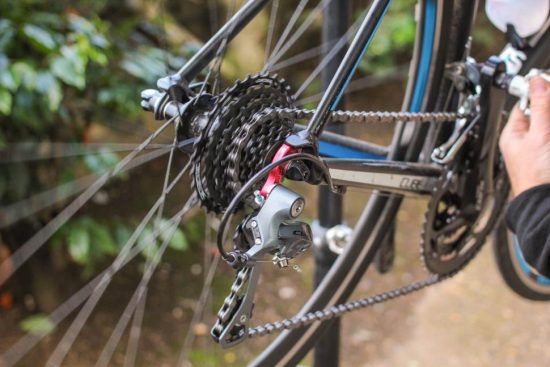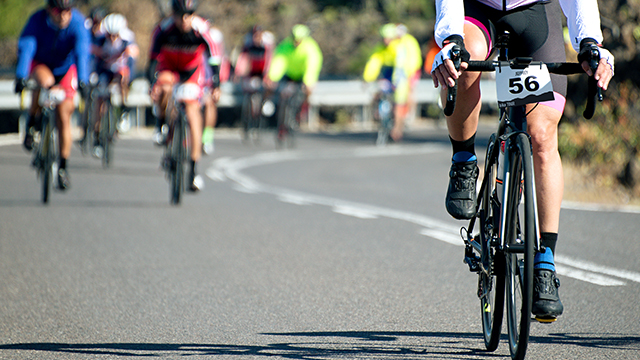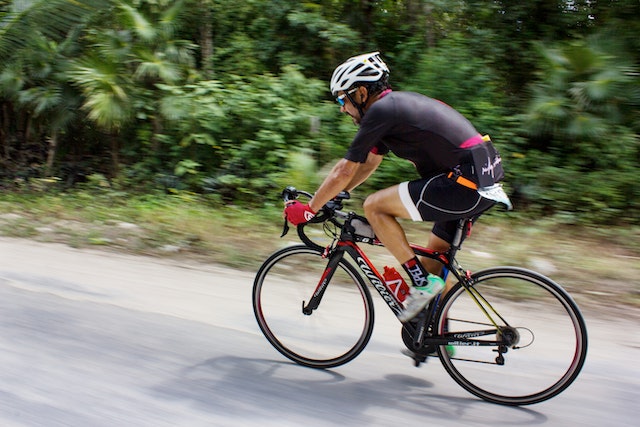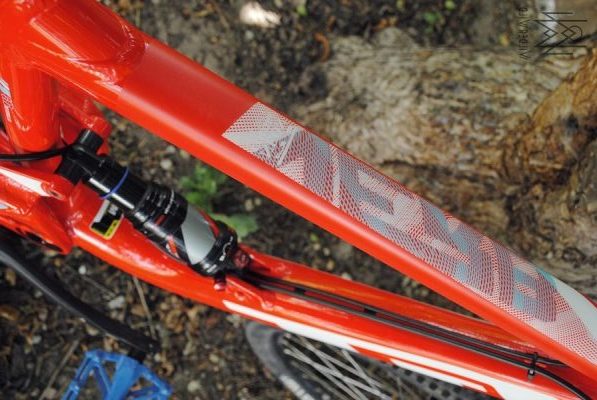Do you feel the wind on your face as you pedal through the open road?nnDoes the rhythmic sound of the chain turn to bring a sense of freedom and adventure? your bike is not just a means of transportation, but a companion that takes you on thrilling journeys. To keep this loyal friend in top shape, regular maintenance is key.nnImagine the satisfaction of gliding effortlessly on a well-maintained bike, each component working in perfect harmony.nnIt’s not just about functionality, but about belonging to a community of passionate riders who take pride in their two-wheeled companions.nnIn this article, we will explore the essential steps to maintain your bike, from cleaning and lubricating to checking tire pressure and replacing brake pads. By following these simple yet crucial tasks, you will ensure that your bike continues to be your trusty steed, ready to take you on countless adventures. Let’s dive in and discover the secrets to keeping your bike in tip-top shape!
1. Cleaning and Lubricating Your Bike

Now it’s time to give your bike some love and attention by cleaning it and lubricating it so it can glide smoothly along the streets. Taking care of your bike not only ensures a longer lifespan but also keeps you connected to the vibrant cycling community.
Start by gathering all the necessary cleaning supplies – a bucket, mild soap, a sponge, and a soft brush. Fill the bucket with warm water and add a few drops of soap to create a gentle cleaning solution. Dip the sponge into the soapy water and gently scrub the frame, wheels, and handlebars, removing any dirt or grime.
Rinse the bike thoroughly with clean water and dry it with a soft cloth. Next, apply lubricant to the chain and gears, ensuring they move effortlessly. Use a lubricant specifically designed for bicycles and apply it evenly, avoiding excessive amounts. Wipe off any excess lubricant with a clean cloth.
Remember, maintaining your bike not only keeps it in top condition but also helps you feel connected to the cycling community, creating a sense of belonging and camaraderie. So, show your bike some love and keep it running smoothly for many joyful rides to come.
2. Checking and Adjusting Tire Pressure
First, make sure your bike’s tire pressure is at the recommended level to ensure optimal performance and prevent flats. For instance, imagine you’re cruising down a smooth road with perfectly inflated tires, effortlessly gliding along as if you were riding on a cloud. It’s a feeling of freedom and belonging, where you become one with your bike and the road beneath you.
To achieve this, follow these steps:
- Find the recommended tire pressure: Consult your bike’s manual or the sidewall of your tire to determine the ideal pressure range. This information ensures you’re inflating your tires to the correct level.
- Use a reliable pressure gauge: Invest in a high-quality pressure gauge to accurately measure your tire pressure. This’ll help you avoid over or under-inflating your tires, which can lead to poor performance or even dangerous situations.
- Inflate your tires regularly: Make it a habit to check your tire pressure before every ride. Inflate them using a reliable pump, ensuring they reach the recommended level. Regular maintenance keeps your bike running smoothly and increase its lifespan.
- Monitor tire pressure during rides: Long rides or changes in temperature can affect tire pressure. Periodically check your tire pressure during your ride to ensure it remains within the recommended range. This’ll help maintain optimal performance and reduce the risk of flats.
By following these steps and paying attention to your bike’s tire pressure, you can experience the joy of effortless riding and the sense of belonging that comes with being part of the cycling community.
3. Inspecting and Replacing Brake Pads
To ensure optimal braking performance, regularly inspect and replace your brake pads. Your brake pads play a crucial role in stopping your bike safely and efficiently. Over time, they can become worn down and lose their effectiveness. By inspecting and replacing them as needed, you can maintain the safety and reliability of your bike.
Start by visually inspecting your brake pads. Look for any signs of wear, such as thinning or unevenness. If you notice that the brake pads are less than 3mm thick, it’s time to replace them. Additionally, check for any debris or dirt that may have accumulated on the pads. If necessary, clean them with a soft cloth or brush.
Replacing your brake pads is a relatively simple process. Start by removing the wheel from your bike. Then, locate the brake caliper and remove the retaining pin or bolt. Slide out the old brake pad and insert the new one in its place. Make sure it is properly aligned and secure. Finally, reattach the retaining pin or bolt and reinstall the wheel.
By regularly inspecting and replacing your brake pads, you can ensure that your bike is always ready for safe and efficient braking. Remember, your safety and the safety of others on the road depend on it. So, take the time to give your brake pads the attention they deserve.
4. Maintaining the Chain and Drivetrain
Regularly caring for the chain and drivetrain is like giving your bike a soothing massage, ensuring smooth and efficient performance. Just like your body needs a massage to relax and function at its best, your bike’s chain and drivetrain also need some tender love and care.
By maintaining the chain and drivetrain, you’ll not only prolong their lifespan but also improve your overall riding experience. To start, make sure to keep your chain clean and properly lubricated. Use a chain cleaner and degreaser to remove any built-up dirt, grime, and old lubricant. Once clean, apply a high-quality bicycle chain lubricant to keep it running smoothly. This will prevent wear and tear, reduce friction, and minimize the chances of your chain snapping or skipping.
Additionally, inspect your drivetrain regularly for any signs of wear or damage. Check the teeth on your chainrings and cassette for any signs of wear and replace them if necessary. A worn-out drivetrain can cause poor shifting and decreased power transfer, so it’s important to keep it in good condition.
Lastly, make sure to properly tension your chain. A loose chain can cause slipping and poor shifting, while an overly tight chain can put unnecessary stress on your drivetrain. Refer to your bike’s manual or consult a professional to ensure you’re adjusting the tension correctly.
By regularly maintaining your bike’s chain and drivetrain, you’ll not only keep your bike running smoothly but also feel a sense of belonging to the vibrant and enthusiastic cycling community. So, give your bike the care it deserves, and enjoy the smooth and efficient ride it will provide in return.
5. Regularly Checking and Adjusting the Gears

Make sure you’re always in the right gear by regularly checking and adjusting your gear. This will not only improve your bike’s performance but also make your ride more enjoyable. Checking and adjusting your gears is a simple task that can be done in just a few minutes. Here’s a step-by-step guide to help you get started:
- Start by shifting through all the gears to make sure they are engaging properly. Listen for any unusual noises or skipping.
- Look at the alignment of your derailleur. It should be parallel to the gears and not touching them. If it’s misaligned, use the barrel adjuster to make small adjustments until it’s properly aligned.
- Check the tension of your derailleur cable. It should be tight enough to shift smoothly but not too tight that it causes the gears to skip. Use the barrel adjuster to make any necessary adjustments.
- Finally, check the indexing of your gears. Shift through each gear and make sure the chain is properly aligned on each one. If it’s not, use the barrel adjuster to fine-tune the indexing.
Regularly checking and adjusting your gears will ensure smooth and precise shifting, making your rides more enjoyable and efficient. By taking care of your bike in this way, you are not only maintaining its performance but also fostering a sense of belonging to the cycling community. Remember, a well-maintained bike is a happy bike, and by extension, a happy cyclist. So grab your tools and get started on keeping your gears in top shape!
| EMOTIONS | BELONGING |
|---|---|
| Joy | Community |
| Satisfaction | Inclusion |
| Pride | Camaraderie |
| Excitement | Togetherness |
Frequently Asked Questions
How often should I clean and lubricate my bike?
You should clean and lubricate your bike regularly, about once every two weeks or after riding in wet or dirty conditions. This will help keep your bike running smoothly and prevent rust and corrosion.
Can I use any type of lubricant on my bike chain?
Yes, you can use any type of lubricant on your bike chain, but it’s best to use a lubricant specifically designed for bike chains. This will ensure optimal performance and prevent damage to your chain.
How do I know if my brake pads need to be replaced?
To determine if your brake pads need replacing, inspect them for wear. If they are less than 3mm thick or have grooves, it’s time for new ones. Properly functioning brakes ensure your safety while riding.
What should I do if my bike chain keeps slipping off?
To tackle your troublesome slipping chain, try these tips: 1) Ensure the chain tension is tight. 2) Clean and lubricate the chain regularly. 3) Check if the chain or gears are worn. 4) Seek professional help if needed.
How often should I check and adjust the gears on my bike?
You should check and adjust the gears on your bike every few months to ensure smooth shifting. This will help you avoid any issues while riding and keep your bike in top condition.
Conclusion
In conclusion, by taking the time to properly maintain your bike, you can ensure its longevity and optimal performance.
Just like a well-tuned machine, your bike deserves regular attention and care. By cleaning and lubricating it, checking tire pressure, inspecting brake pads, and maintaining the chain and drivetrain, you can prevent costly repairs and enjoy smooth rides for years to come.
Remember, a well-maintained bike is like a knight in shining armor, ready to conquer any road or trail that lies ahead. So, saddle up and keep your trusty steed in top shape!





